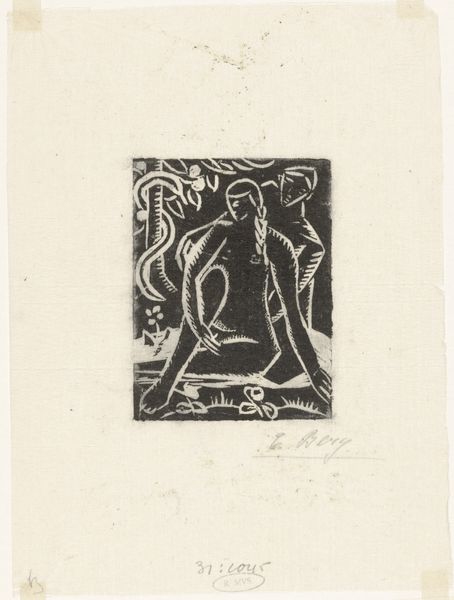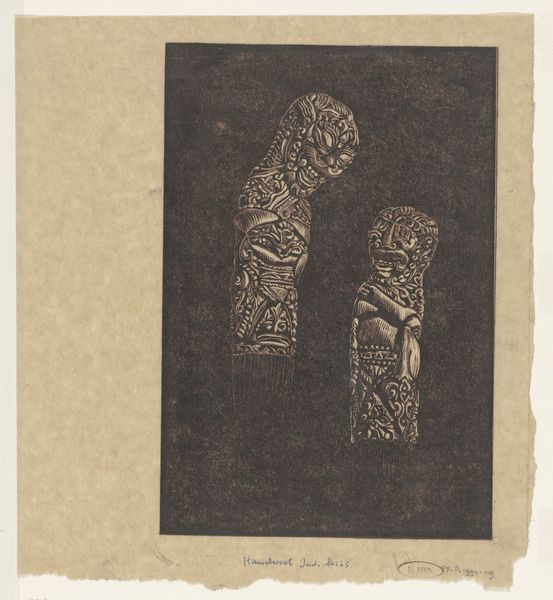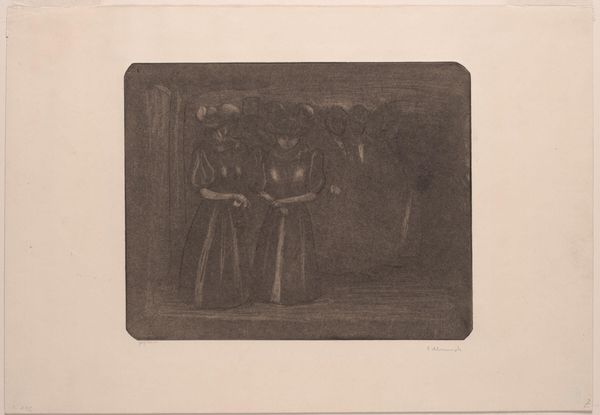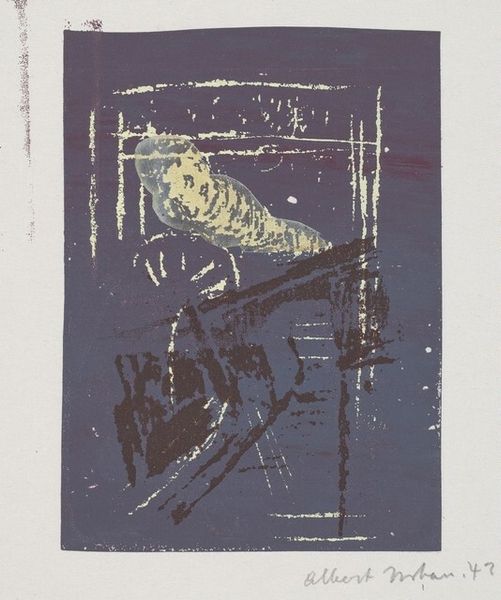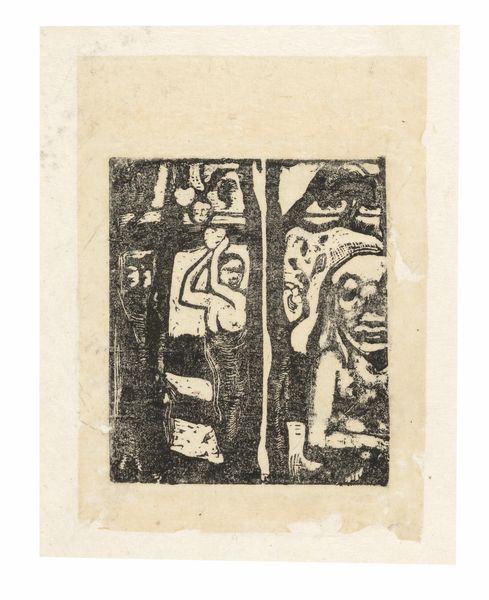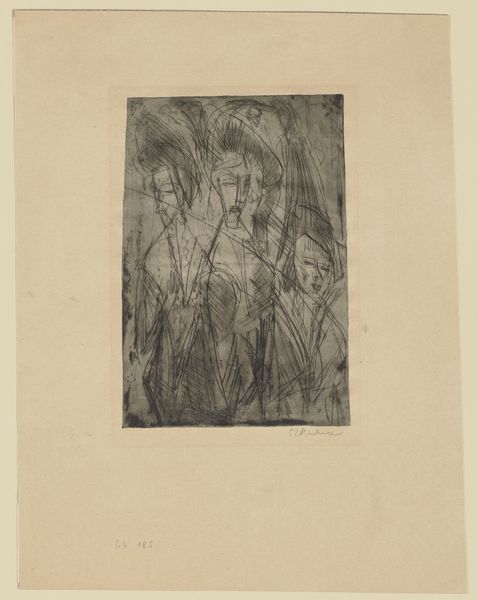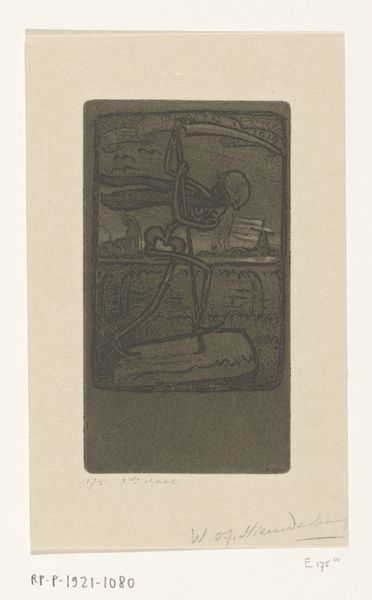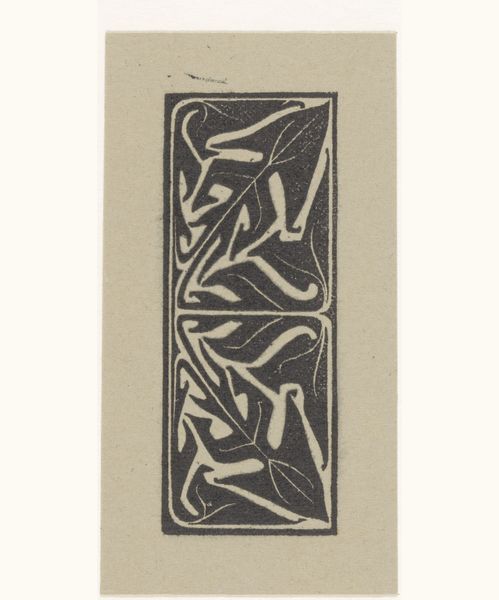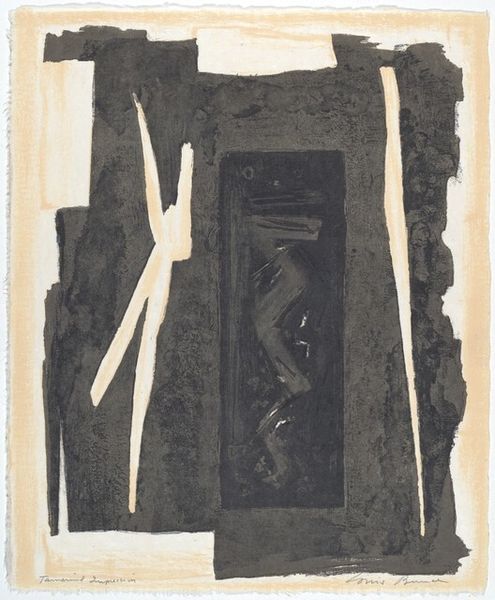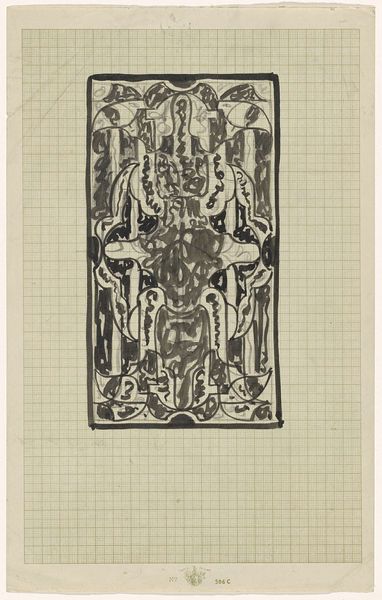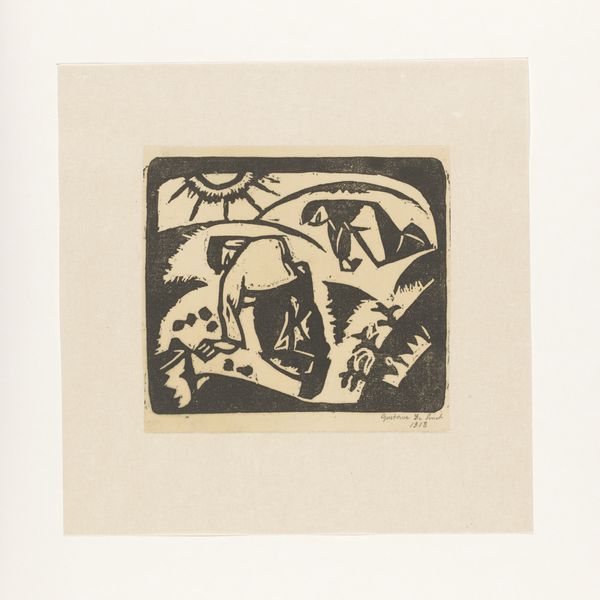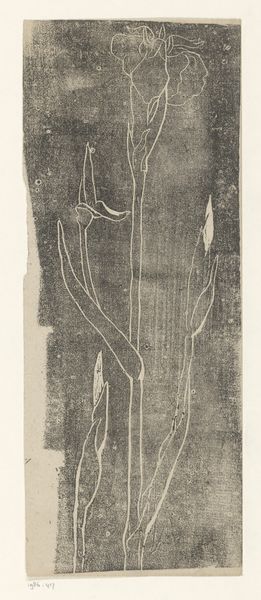
print, linocut, woodcut
#
portrait
#
narrative-art
# print
#
linocut
#
woodcut effect
#
german-expressionism
#
linocut print
#
expressionism
#
woodcut
Dimensions: height 193 mm, width 174 mm, height 292 mm, width 220 mm
Copyright: Rijks Museum: Open Domain
Editor: This intriguing linocut, "Twee mannen bij figuur met gesloten ogen," created by Samuel Jessurun de Mesquita in 1921, shows two men flanking a figure with closed eyes. There's something unsettling about the rigidity and anonymity of the figures. How would you interpret this piece through its historical and social context? Curator: Well, this work places itself squarely within the German Expressionist movement, doesn't it? The stark lines and flattened perspective contribute to the sense of unease that was prevalent after World War I. Given the social turmoil and shifting power structures of that period, it is tempting to ask: whom does the 'figure with closed eyes' represent? Is it blindness to truth, apathy? Perhaps it symbolizes a societal weariness, choosing ignorance amidst conflict. How does this connect, do you think, to de Mesquita's own personal background during this era? Editor: Knowing that de Mesquita was a Jewish artist working during rising antisemitism in Europe certainly casts a new light on the "closed eyes". Maybe it speaks to willful ignorance or denial of impending dangers? The two figures almost seem to usher the blind figure forward... Curator: Exactly. The 'escorting' figures – consider them instruments of social forces. Their placement is also telling – a possible indictment on complicity. What role do cultural institutions play in challenging this sort of “blindness” or are they, also, passive? Editor: So the Rijksmuseum holding this piece is actively challenging that complicity by giving it a platform for interpretation and debate. This is helpful! I never would have looked at it this way without considering the history around it. Curator: Indeed. It prompts us to look critically at not only the artwork but the social landscape that bore it, and ourselves, and how we engage with the power structures. It encourages viewers to critically examine the role that ignorance or denial plays within a larger social ill.
Comments
No comments
Be the first to comment and join the conversation on the ultimate creative platform.

